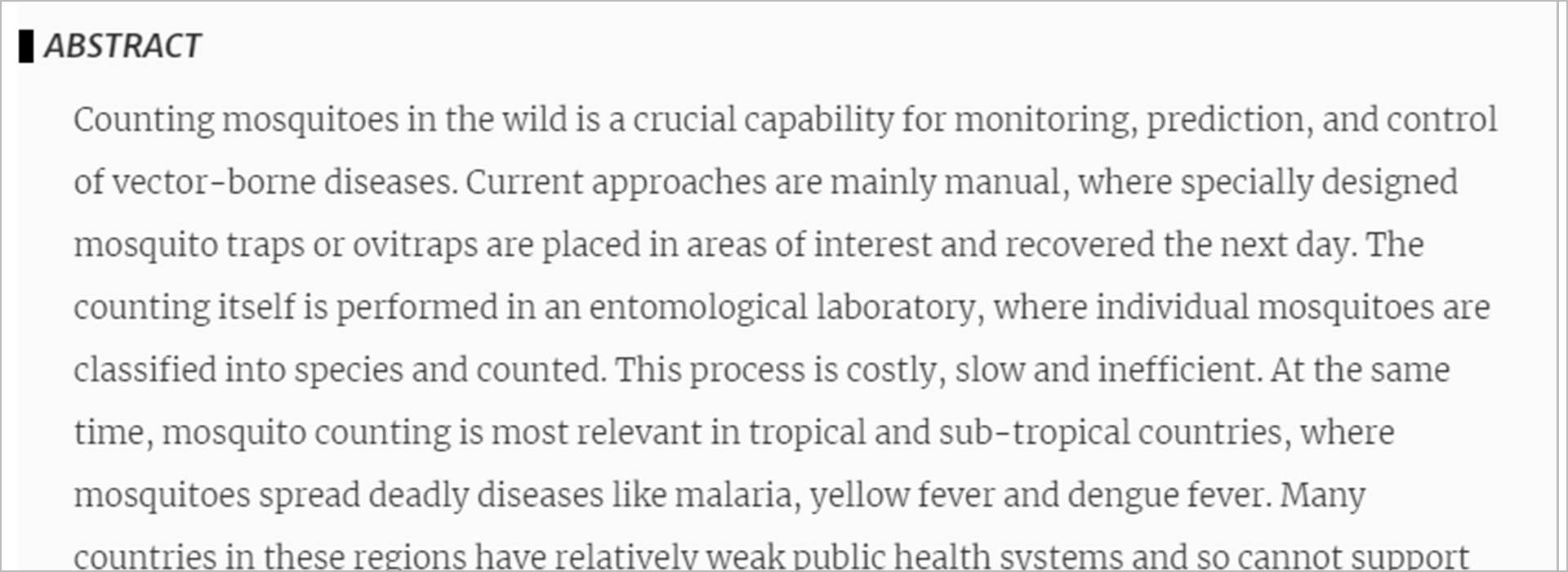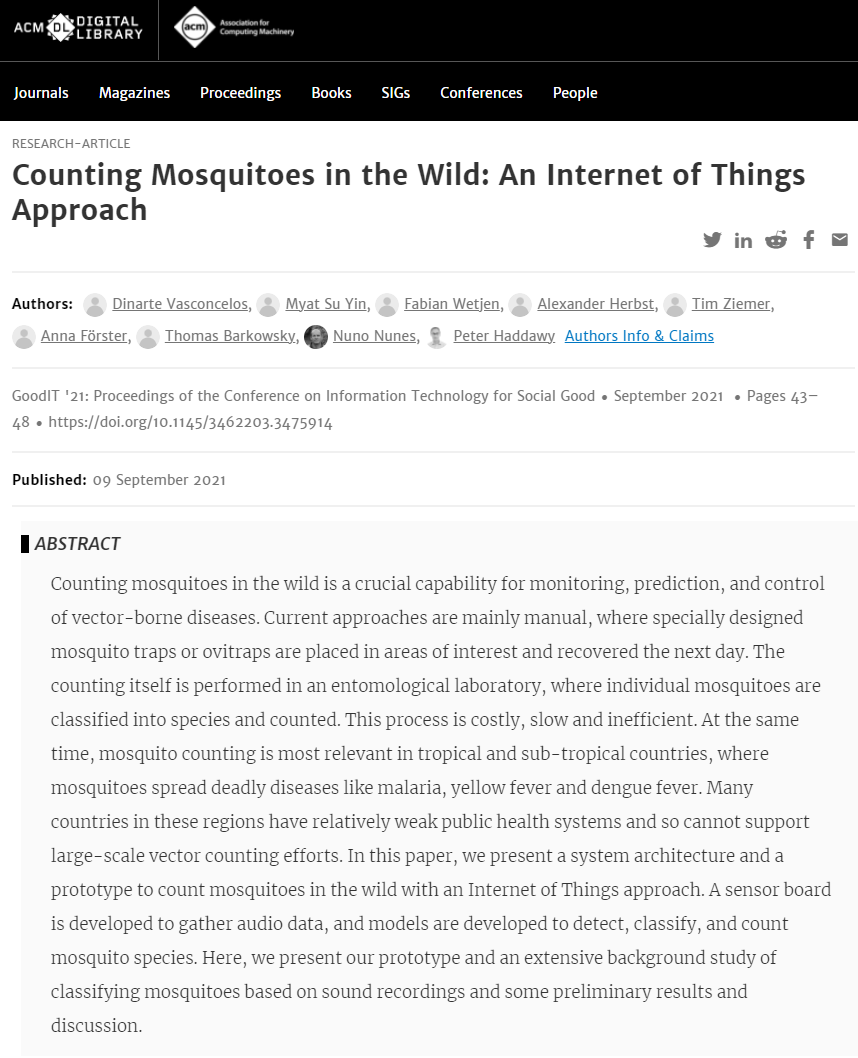Journal /Conference
ACM Int’l Conf. on Information Technology for Social Good
Authors
Dinarte Vasconcelos (1), Myat Su Yin (2), Fabian Wetjen (3), Alexander Herbst (3), Tim Ziemer (3), Anna Förster (3), Thomas Barkowsky (3), Nuno Nunes (4), Peter Haddawy (2 3)
Affiliation
- ITI/LARSYS, Instituto Superior, Técnico, Portugal
- Faculty of ICT, Mahidol University, Thailand
- Bremen Spatial Cognition Center, University of Bremen, Germany
- ITI/LARSYS, Instituto Superior, Técnico, Portugal
Abstract
Counting mosquitoes in the wild is a crucial capability for monitoring, prediction, and control of vector-borne diseases. Current approaches are mainly manual, where specially designed mosquito traps or ovitraps are placed in areas of interest and recovered the next day. The counting itself is performed in an entomological laboratory, where individual mosquitoes are classified into species and counted. This process is costly, slow and inefficient. At the same time, mosquito counting is most relevant in tropical and sub-tropical countries, where mosquitoes spread deadly diseases like malaria, yellow fever and dengue fever. Many countries in these regions have relatively weak public health systems and so cannot support large-scale vector counting efforts. In this paper, we present a system architecture and a prototype to count mosquitoes in the wild with an Internet of Things approach. A sensor board is developed to gather audio data, and models are developed to detect, classify, and count mosquito species. Here, we present our prototype and an extensive background study of classifying mosquitoes based on sound recordings and some preliminary results and discussion.
DOI / Link
- 10.1145/3462203.3475914


